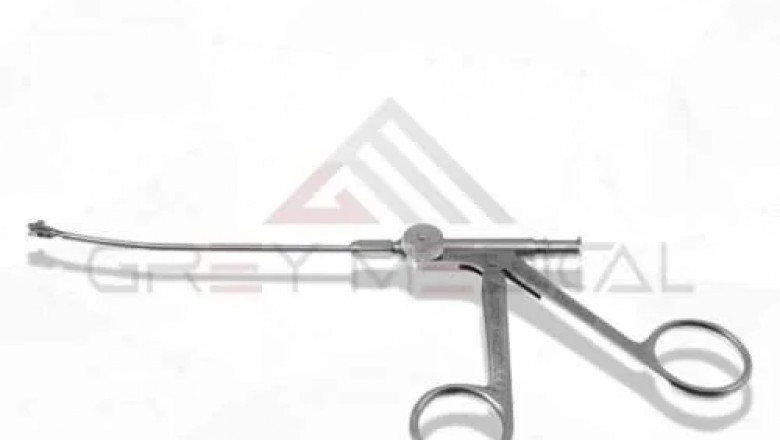views
The backbiter instrument is one of the most versatile tools used in surgical fields, known for its precision and efficiency. This unique instrument is tailored primarily for ENT (ear, nose, and throat) surgeries, where professionals need detailed access to nasal and sinus cavities. Designed to cut and remove tissue, the backbiter’s design makes it especially valuable in delicate procedures requiring careful maneuvering without compromising surrounding anatomy.
Its importance in modern surgery cannot be overstated. From endoscopic sinus surgeries to managing complex nasal blockages, this instrument consistently delivers the precision surgeons need. Combined with other tools like a rasp surgical instrument, the backbiter plays an integral role in achieving optimal surgical outcomes.
The Design and Functionality of the Backbiter Instrument
The backbiter instrument is designed with a small, sharp, and curved biting end that allows surgeons to grasp and remove tissue with minimal strain. Unlike straight instruments, its distinctive curved design makes it ideal for accessing hard-to-reach areas, especially in nasal surgeries. The precision cutting edge ensures that soft tissue or cartilage can be removed efficiently, allowing surgeons to clear obstructed passages or remove unwanted growths, such as polyps.
One of the most significant advantages of the backbiter is its ergonomic handle, which ensures a firm grip and allows for precise control during intricate procedures. This design minimizes user fatigue while maximizing accuracy, which is crucial in surgeries that demand sustained focus and careful tissue manipulation.
The Backbiter in ENT Surgeries
The backbiter finds its primary use in ENT procedures, particularly in functional endoscopic sinus surgery (FESS). This minimally invasive surgery is often conducted to treat chronic sinusitis or structural abnormalities in the nasal cavity. The backbiter is an essential part of the process, as it allows surgeons to remove obstructive tissue and restore proper sinus drainage.
This instrument is also a trusted companion in turbinectomy procedures where overgrown nasal turbinates are reduced to improve breathing. The backbiter’s curved tip is uniquely suited for working around the nasal structures while minimizing trauma to nearby tissues. Combining it with a rasp surgical instrument further refines the bone and cartilage, ensuring smoother anatomical contours and better post-surgical outcomes.
Precision in Complex Surgeries
Surgeons often pair the backbiter instrument with other surgical tools to handle more complex cases. For instance, many professionals rely on a rasp surgical instrument alongside the backbiter to smooth bone surfaces or refine anatomical structures, especially during reconstructive nasal surgeries. This combination not only enhances precision but also reduces the risk of complications, making it a preferred choice for experienced surgeons.
Additionally, the backbiter is highly effective in septoplasty surgeries, where correcting a deviated septum improves nasal airflow and patient comfort. The ability to remove tissue without excess force makes it indispensable in these focused, detail-oriented procedures.
Advancements in Instrument Design
The evolution of surgical instrumentation ensures continual improvement. Modern backbiter instruments feature enhanced durability, sharper cutting edges, and materials like medical-grade stainless steel to withstand repeated sterilization. These advancements ensure that the tool remains a reliable asset in surgical settings even after extensive use.
Some variations now come with adjustable sizes and angles to better suit anatomical differences between patients. Such innovations allow surgeons to customize the tool’s application, making it more efficient and reducing procedure time. The pairing of these enhanced backbiter instruments with highly specialized tools, such as the rasp surgical instrument, highlights how modern technology is revolutionizing surgical precision and patient care.
An Indispensable Tool for Surgeons
The backbiter instrument stands out for its unique ability to handle delicate surgical challenges with accuracy and control. From its crucial role in FESS procedures to its adaptability across a range of ENT surgeries, this instrument contributes significantly to improved surgical techniques and patient outcomes.
When paired with other tools like the rasp surgical instrument, the backbiter reinforces the importance of precision instruments in modern medicine. Its ability to access and address challenging areas within the nasal cavity simplifies complex surgeries, making it an essential part of any surgical toolkit. Surgeons worldwide continue to trust the backbiter for its unmatched versatility, ensuring its relevance in operating rooms for years to come.






















Comments
0 comment